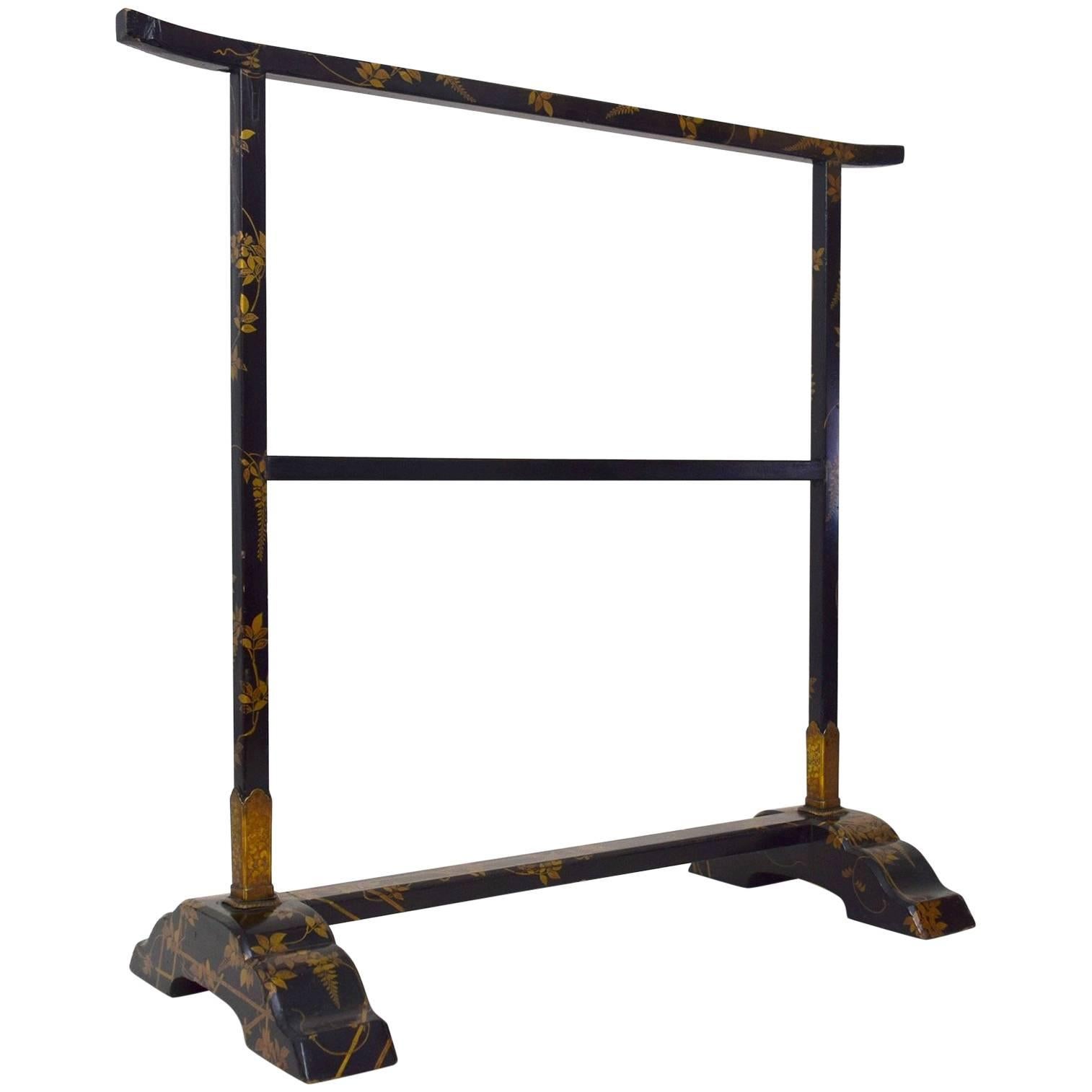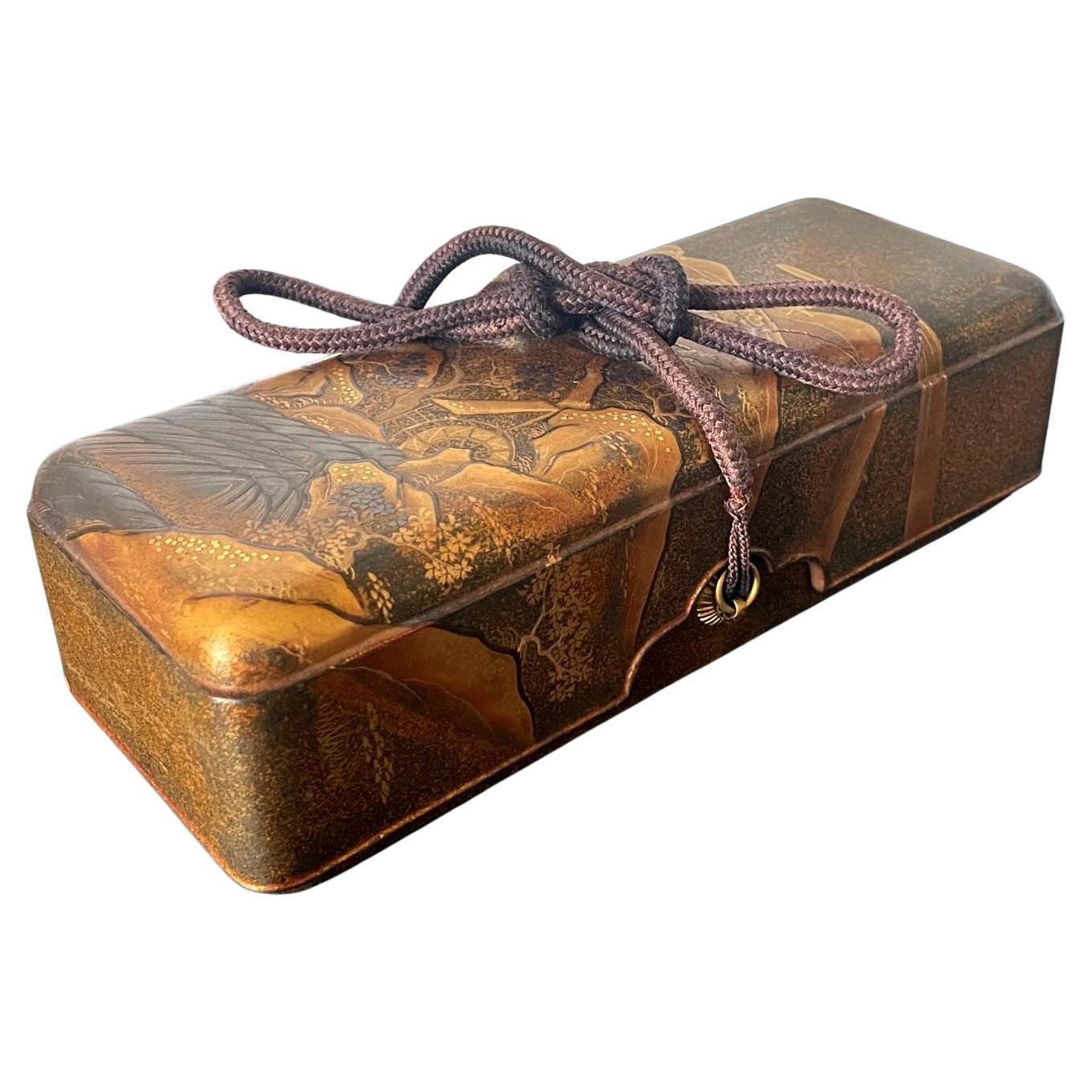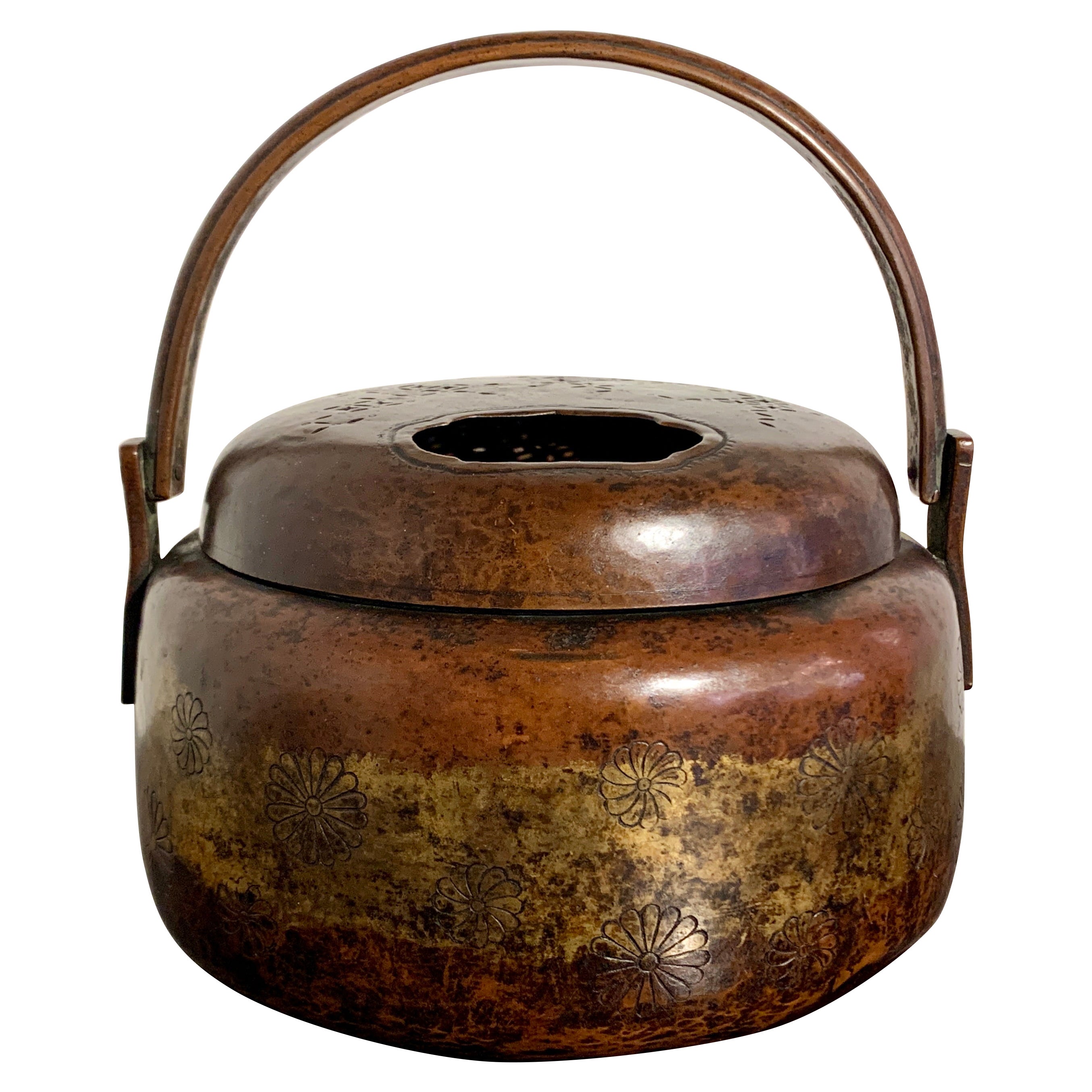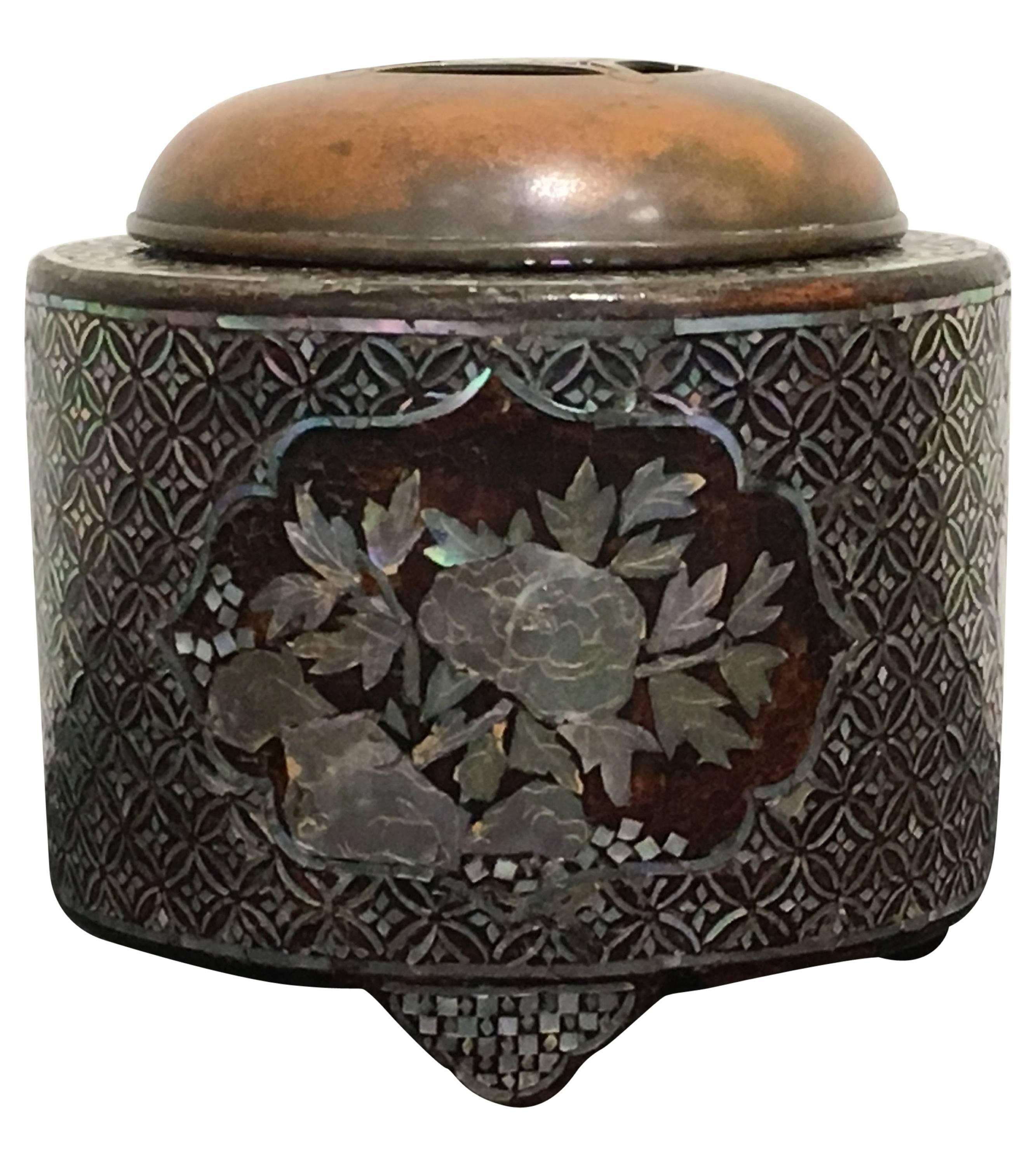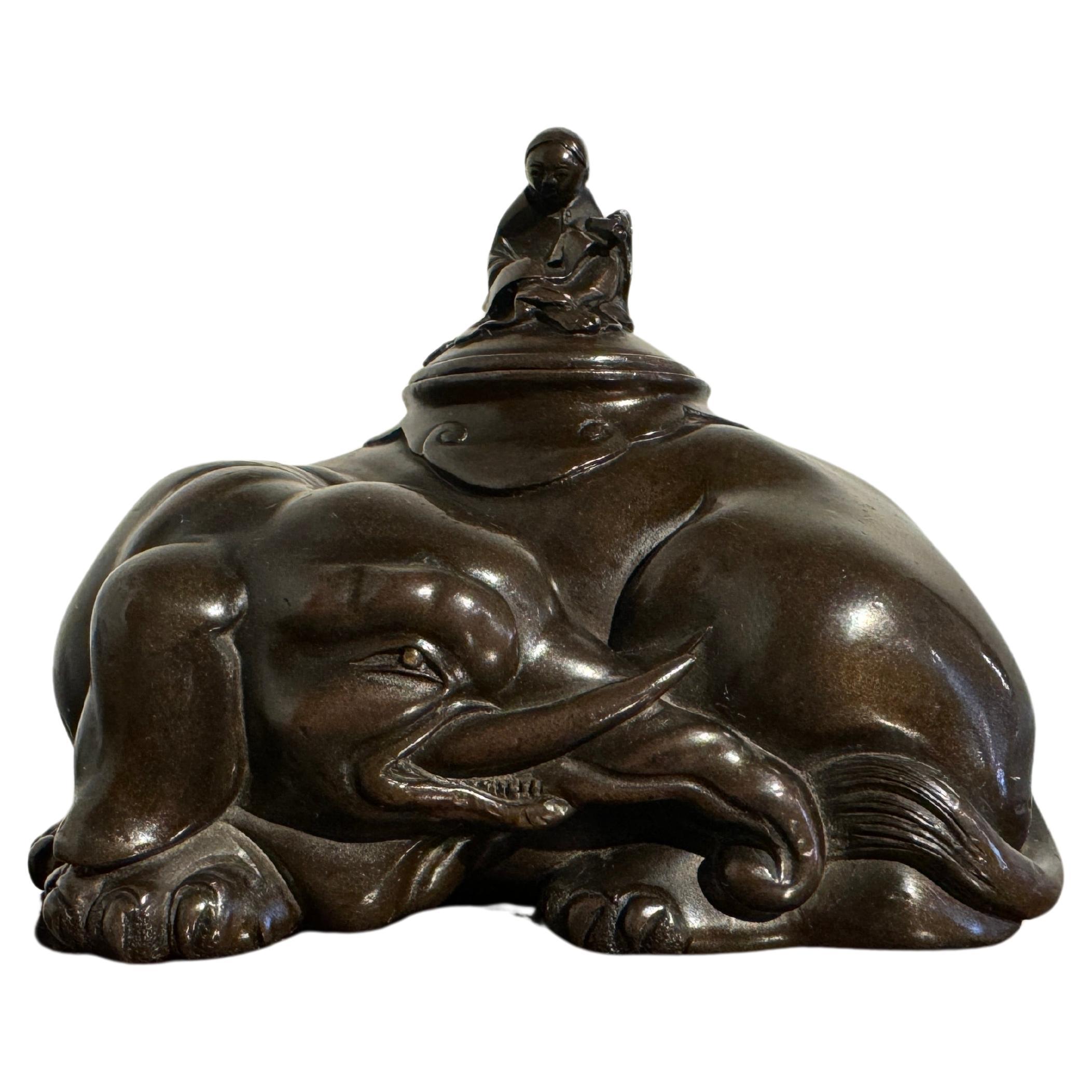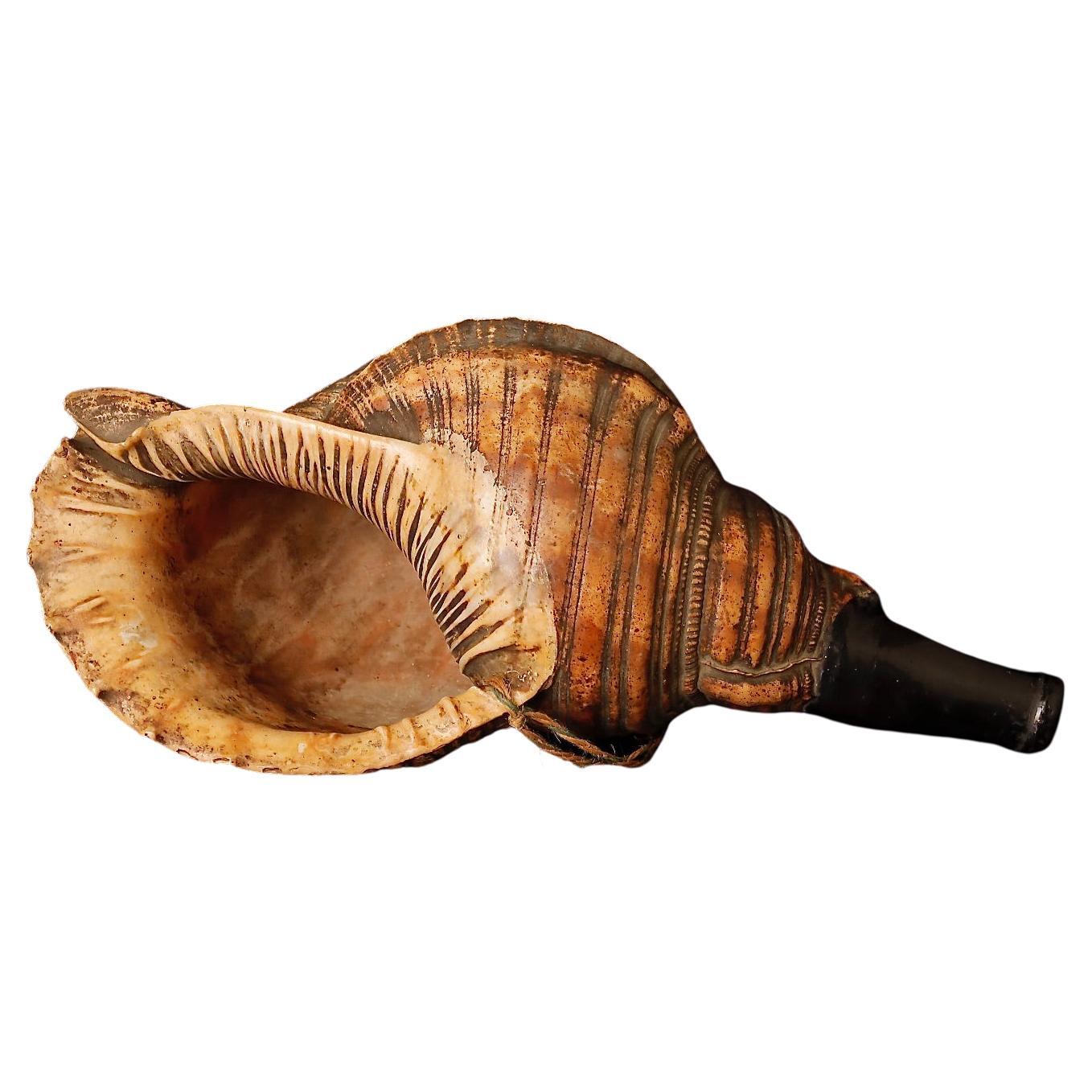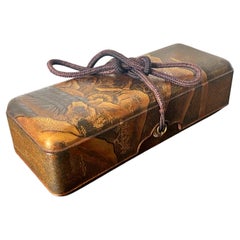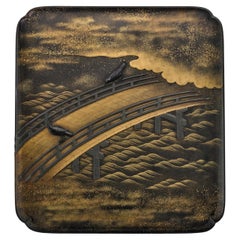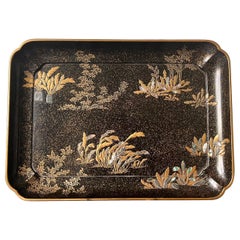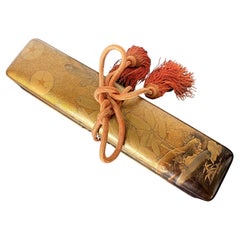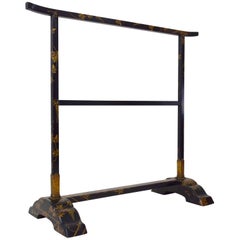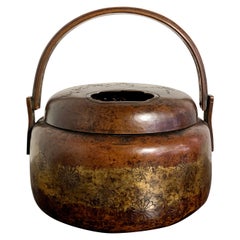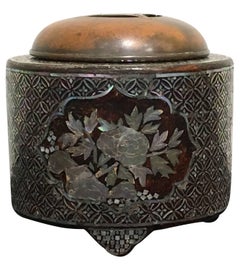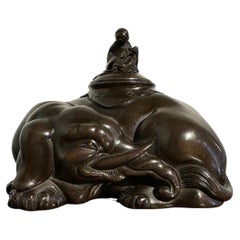Items Similar to Rare Japanese Traveling Cabinet Oi Edo Period
Want more images or videos?
Request additional images or videos from the seller
1 of 17
Rare Japanese Traveling Cabinet Oi Edo Period
About the Item
Served as a traveling cabinet as well as a shrine and carried like a backpack for the Buddhist priests and monks during long pilgrimage, this rare chest is known as Oi Japanese. In China the carrier case is known as Ji, traditionally used by the traveling scholars or monks in the ancient time to carry their belongings such as books, clothes, and stationary. The piece on offer here is of Japanese origin and dated to Edo period (circa 17-18th century), possibly older to 16th century of Momoyama or Muromachi period. It was likely reserved for the use of a high-rank priest to carry the Buddhism scripts based on its luxurious high quality. The wood frame takes the shape of a pagoda with carved bamboo design that features upturned corner cornices and slightly sprayed legs. The back and the side were made of woven bamboo with lacquered interior paper lining, much of which has now degraded. This design allows the piece to be light weight, water resistant but breathable. The façade features a small upper and a large lower compartment with doors covered in lacquered paper painted with gilt mons and a dragon like form among floral pattern (in a rather abstract fashion). Along the chest, holes were placed with lining hardware. These are where the rope was threaded for the travelers to carry it on his shoulder. The shelf in the lower compartment is collapsible, making the piece practical for storage function.
A marvelous piece, it has been largely preserved in its intact form and mostly original condition. A very worn green silk rope is also present, but it is likely a later replacement.
See a similar piece in Peabody Essex Musuem, see item E303292 in its Japanese Collection.
Another similar piece is in the Eugen Fuller Memorial Collection 72.15 in Seattle Art Museum.
- Dimensions:Height: 34 in (86.36 cm)Width: 20.5 in (52.07 cm)Depth: 19 in (48.26 cm)
- Style:Edo (Of the Period)
- Materials and Techniques:
- Place of Origin:
- Period:
- Date of Manufacture:17th-18th Century
- Condition:Wear consistent with age and use. Minor losses. Minor fading. Overall light wear, color variation, scrapes, crackles and small losses on the doors, losses of interior paper lining, patina on hardware, the rope is worn and faded, slight concave on the top. Older restoration visible in some spots.
- Seller Location:Atlanta, GA
- Reference Number:1stDibs: LU945019536812
About the Seller
4.9
Platinum Seller
Premium sellers with a 4.7+ rating and 24-hour response times
Established in 2006
1stDibs seller since 2010
551 sales on 1stDibs
Typical response time: <1 hour
- ShippingRetrieving quote...Shipping from: Atlanta, GA
- Return Policy
Authenticity Guarantee
In the unlikely event there’s an issue with an item’s authenticity, contact us within 1 year for a full refund. DetailsMoney-Back Guarantee
If your item is not as described, is damaged in transit, or does not arrive, contact us within 7 days for a full refund. Details24-Hour Cancellation
You have a 24-hour grace period in which to reconsider your purchase, with no questions asked.Vetted Professional Sellers
Our world-class sellers must adhere to strict standards for service and quality, maintaining the integrity of our listings.Price-Match Guarantee
If you find that a seller listed the same item for a lower price elsewhere, we’ll match it.Trusted Global Delivery
Our best-in-class carrier network provides specialized shipping options worldwide, including custom delivery.More From This Seller
View AllJapanese Lacquered Maki-e Fubako Edo Period
Located in Atlanta, GA
A Japanese lacquered wood fubako (a box used to store document or small scroll painting), circa second half of 19th century late Edo period. The rectangular box features an unusually deep lipped lid with slightly rounded corners, a conforming lower box that is almost entirely covered by the lid which has two bronze medallion rings with tasseled...
Category
Antique 19th Century Japanese Edo Lacquer
Materials
Wood, Lacquer
Exquisite Japanese Lacquer Maki-e Suzuribako by Koma Kyūhaku Edo Period
Located in Atlanta, GA
One of the finest Japanese Maki-e Suzuribakos (ink box) we have on offer, the roiro color box showcases an ambient nocturnal scene in which two shakudo inlaid crows perched on the handrails of a bridge (possible the Uji Bridge...
Category
Antique Early 19th Century Japanese Japonisme Lacquer
Materials
Stone, Metal
Japanese Lacquer Tray with Maki-e and Inlay Hara Yoyusai Edo Period
Located in Atlanta, GA
A lovely Japanese lacquer rectangular lacquer tray with a slightly scalloped corner and four L shape supporting feet by one of the most celebrated lacquer artist active in Edo period Hara Yoyusai (1772-1845). Yoyusai lived in Edo (Tokyo) and worked under the patronage of Lord Matsudaira. He operated a large workshop and had a very prolific output of lacquer objects. Most survived pieces being inro...
Category
Antique 19th Century Japanese Japonisme Lacquer
Materials
Wood, Lacquer
Japanese Lacquered Gold Maki-E Naga Fubako Meiji Period
Located in Atlanta, GA
A Japanese lacquered wood Naga Fubako (a long box used to store document or large scroll painting), circa 19th century Meiji period. The rectangular box features an unusually deep lipped lid with slightly rounded corners, a conforming lower box with bronze medallion rings with tasseled...
Category
Antique 19th Century Japanese Meiji Lacquer
Materials
Wood, Lacquer
Collection of Four Japanese Wood Print Blocks Meiji Period
Located in Atlanta, GA
A collection of four carved wood print blocks from Japan circa late 19th century (Meiji Period). Constructed and hand-chiseled from hardwood, the printing blocks were finely carved o...
Category
Early 20th Century Japanese Other Scholar's Objects
Materials
Wood
Japanese Lacquered Maki-E Fubako in Kodaiji Style
Located in Atlanta, GA
A rare Japanese lacquered wood fubako decorated in Kodaiji maki-e style circa early 17th century the beginning of the Edo period, possibly early toward the end of the Azuchi-Momoyama period. The rectangular, long and slim box features a deep lipped lid with slightly rounded corners, a conforming lower box with two bronze medallion rings with tasseled...
Category
Antique Early 17th Century Japanese Edo Lacquer
Materials
Wood, Lacquer
You May Also Like
Elegant Japanese Edo Period Rack
Located in New York, NY
This refined object dates to the first half of the 19th century, and was probably used for obi, kimono sashes, which were hung over it. The gold decorations on the black-lacquered g...
Category
Antique 1830s Japanese Edo Lacquer
Materials
Lacquer
Japanese Parcel Gilt Copper Hibachi, Edo Period, 18th Century, Japan
Located in Austin, TX
A sublime Japanese parcel gilt copper hand warmer, hibachi, with chrysanthemum design, Edo Period, 18th century, Japan.
The hand warmer, called a...
Category
Antique 18th Century Japanese Edo Metalwork
Materials
Copper
Japanese Edo Period Lacquer and Mother-of-Pearl Embellished Stoneware Koro
Located in Austin, TX
A highly unusual Japanese crackle glazed koro (incense burner or censer), lacquered and inlaid with mother-of-pearl embellishment, signed Gyokusen, Ed...
Category
Antique 19th Century Japanese Edo Scholar's Objects
Materials
Copper
Japanese Bronze Water Coupe, Eguchi as Fugen, Edo/Meiji Period, Japan
Located in Austin, TX
A very finely cast Japanese bronze water coupe in the form of the courtesan Eguchi riding an elephant, signed Kazutada, Edo to Meiji Period, mid 19th century, Japan.
The small and elegant bronze water coupe is exquisitely cast to depict a figure of a seated lady reading poetry upon the back of a large recumbent elephant. This image depicts the Courtesan of Eguchi as Fugen Bosatsu...
Category
Antique Mid-19th Century Japanese Meiji Scholar's Objects
Materials
Bronze
Late Edo Period Horagai Conch Shell Trumpet
Located in Fukuoka, JP
Horagai conch shell trumpet with beautiful patination and bronze mouthpiece.
This Horagai conch shell trumpet is a rare and valuable piece of Japanese history and culture. It was made in the Late Edo period (18th-19th century) and is in fine original condition with expected abrasions due to the significant age of the item. The trumpet is made of a conch shell with a bronze mouthpiece. It measures 34x 16.5 x 13 cm (13.5 / 6.5 / 5 inch) and weighs 1.2kg (2.5 lb).
The trumpet has a beautiful patina, resulting from years of use and exposure to the elements. The bronze mouthpiece is also in good condition and shows no signs of wear. The trumpet is powerful and can produce a loud, clear sound. It was traditionally used in Japanese ceremonies and festivals and is still used today by some Shinto priests...
Category
Antique 19th Century Japanese Edo Scholar's Objects
Materials
Shell
Japanese Inlaid Bronze Yatate Scholars Travelling Inkwell
Located in Bishop's Stortford, Hertfordshire
A fine quality antique Japanese inlaid bronze Yatate scholars travelling inkwell dating to the 19th century and understood to be from the Edo pe...
Category
Antique 19th Century Japanese Edo Scholar's Objects
Materials
Bronze
